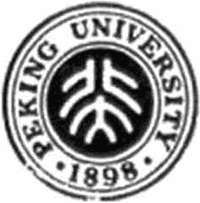Carnival rube: Hey honey, let’s see how good this guy is. What would I win?
Navin (Steve Martin’s character): Uh, anything in this general area right in here. Anything below the stereo and on this side of the bicentennial glasses. Anything between the ashtrays and the thimble. Anything in this three inches right in here in this area. That includes the Chiclets, but not the erasers.
—from The Jerk
It’s easy for people to be declared winners when the barriers for winning are set low enough and everyone is going to be declared a winner no matter what. Here’s what Xinhua reported on Saturday: “The Chinese government plans to eliminate all illiteracy among people aged between 15 and 24 by 2010.” As long as Chinese characters are the sole accepted script for the vast majority of people in China, the chances for this plan to really succeed are zero. But I’m certain it will be declared a great success anyway.
Remarkably, Xinhua included something in the article that rings true and hints at the prospects for any real success:
“The central government only appropriates eight million yuan (about one million US dollars) each year to tackle illiteracy, which means each illiterate person only has seven cents (less than one US cent) a year,” according to another MOE official who declined to be named. “And the increasing number of migrant workers has made education a tough task for the government,” he said.
Less than one US cent won’t buy even so much as one Chiclet, much less a whole pack. And it damn sure won’t be enough to boost literacy in any significant way.
That’s also basing things on the number of illiterate people in China as 114 million, which is far, far too low. But even if we accept both that claim and the BS claim by an official of the Ministry of Education who would identify himself that “China has maintained an illiteracy ratio of around 4 percent among the youth and the middle aged,” that doesn’t leave much money.
In 2010, China’s 15-24 age group will total some 190 million people. If 4 percent of those are counted as illiterate, then 7.6 million people would receive a total of 8 million yuan per year. So, even if China decided to axe all literacy programs for people over the age of 24 (which it won’t do) and commits all its alloted resources to the 15-24 age group, the funding would barely top US$1 per person per year to learn the modern world’s most difficult script. Then consider the fact that illiteracy is highest in China’s countryside — a vast area with inadequate infrastructure.
sources:
- Chinese literacy, Pinyin News, January 17, 2006
- China has an illiterate population of 114 million, Xinhua, September 16, 2006
- Data – Population Growth: China’s population by age groups, 1950 – 2050, United Nations Population Projection, 1998 Revision

 Peking University, China’s most prestigious school, has announced that it is planning a change. First, the school’s logo will be redesigned. The original was made by Lu Xun, who was apparently not just a
Peking University, China’s most prestigious school, has announced that it is planning a change. First, the school’s logo will be redesigned. The original was made by Lu Xun, who was apparently not just a